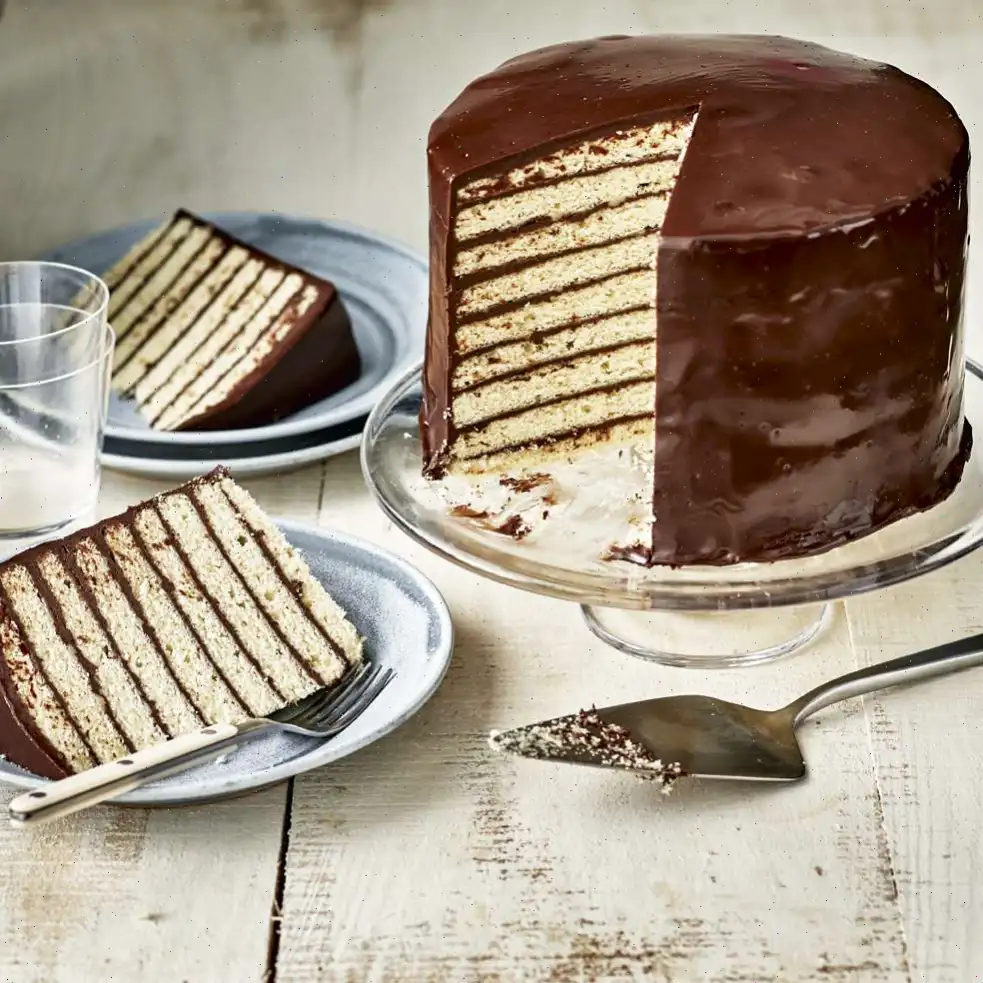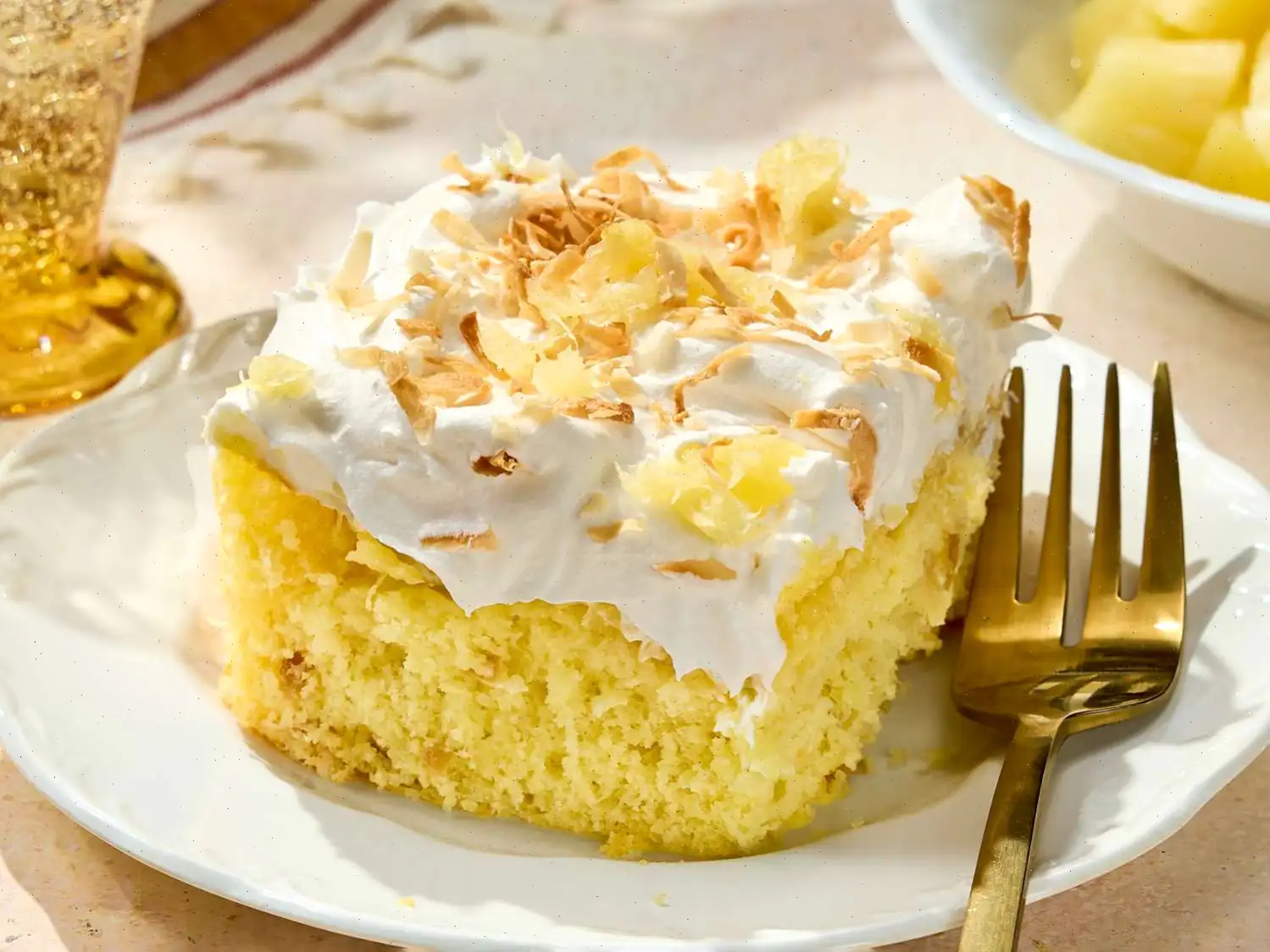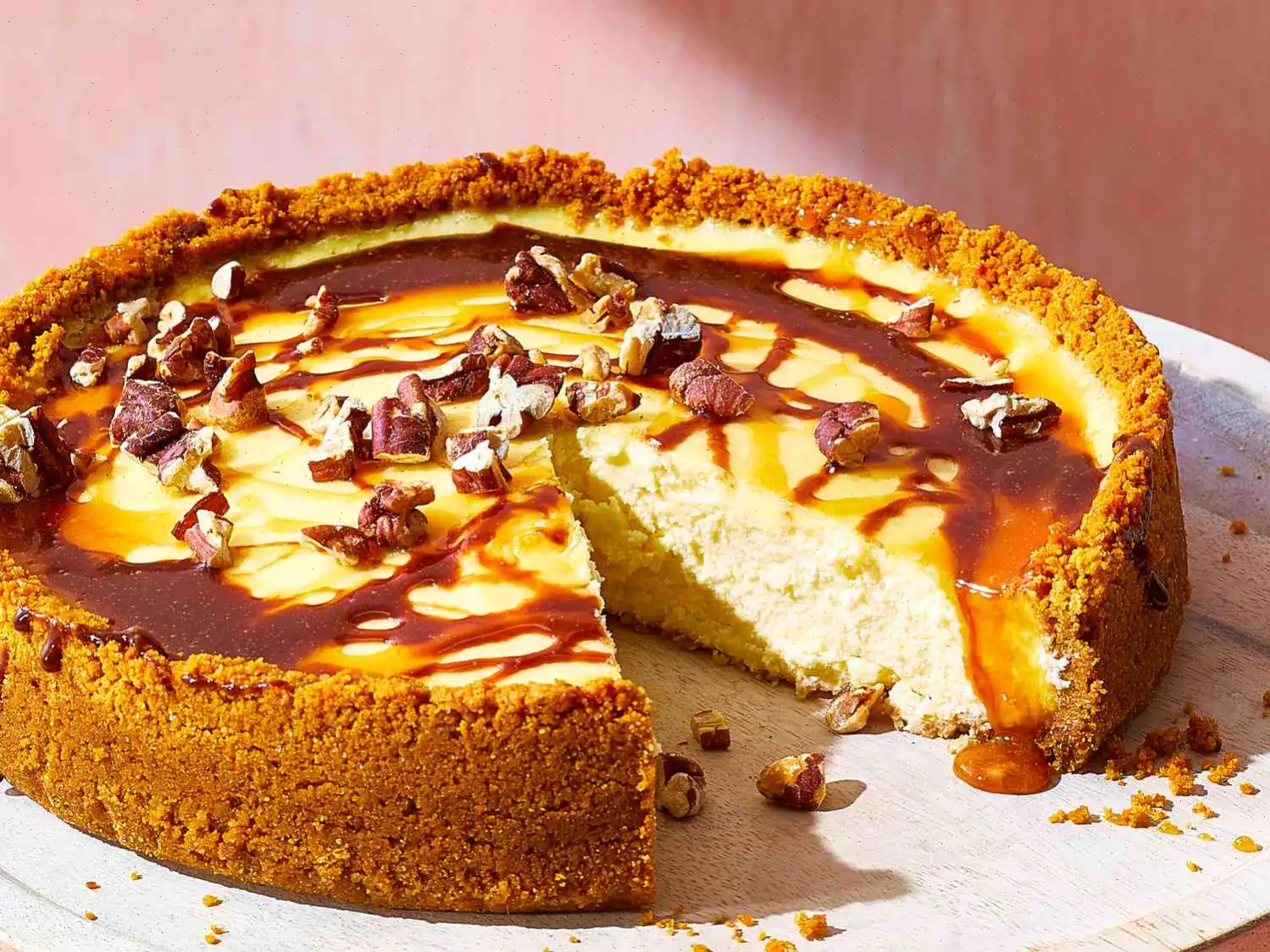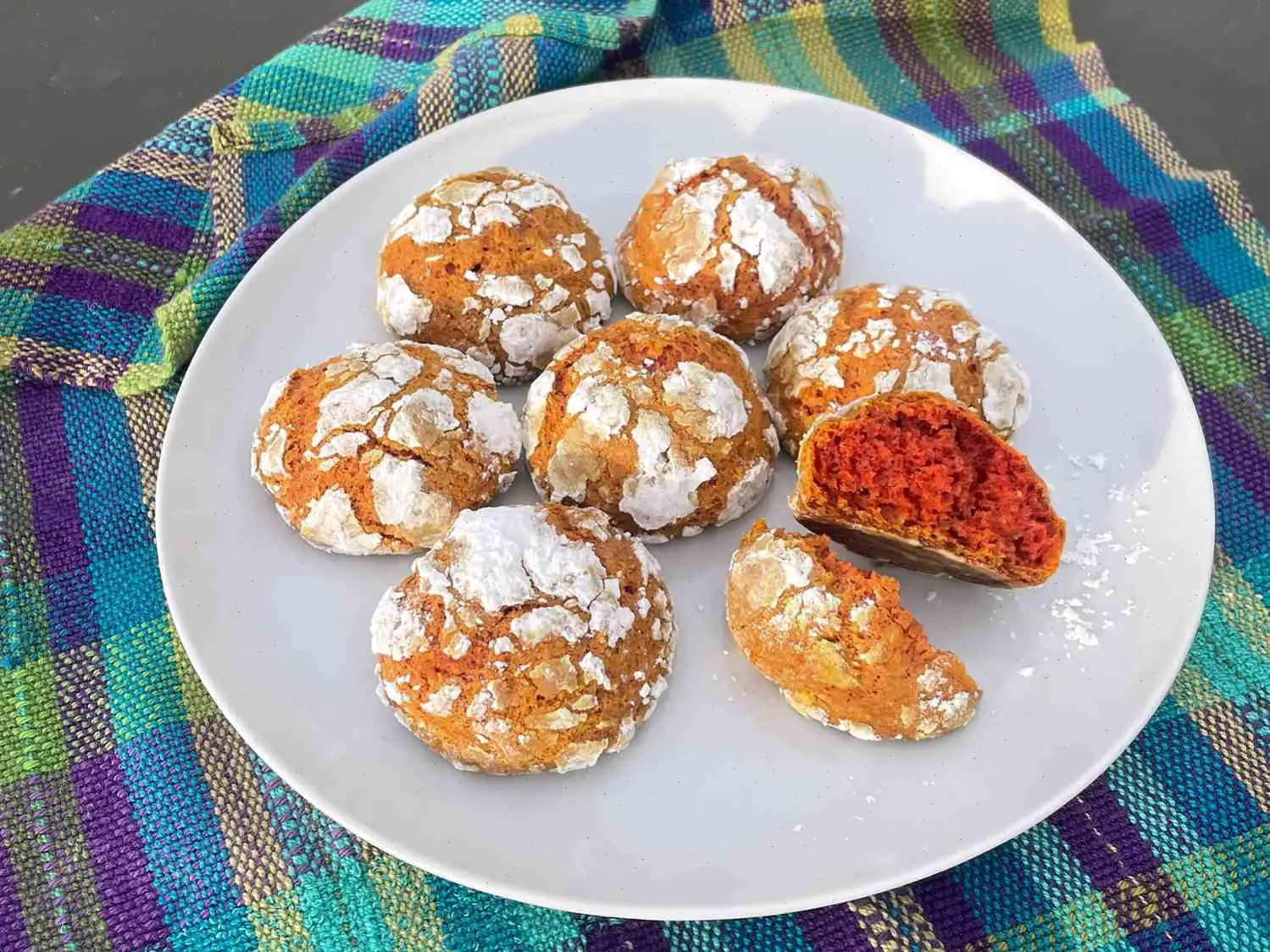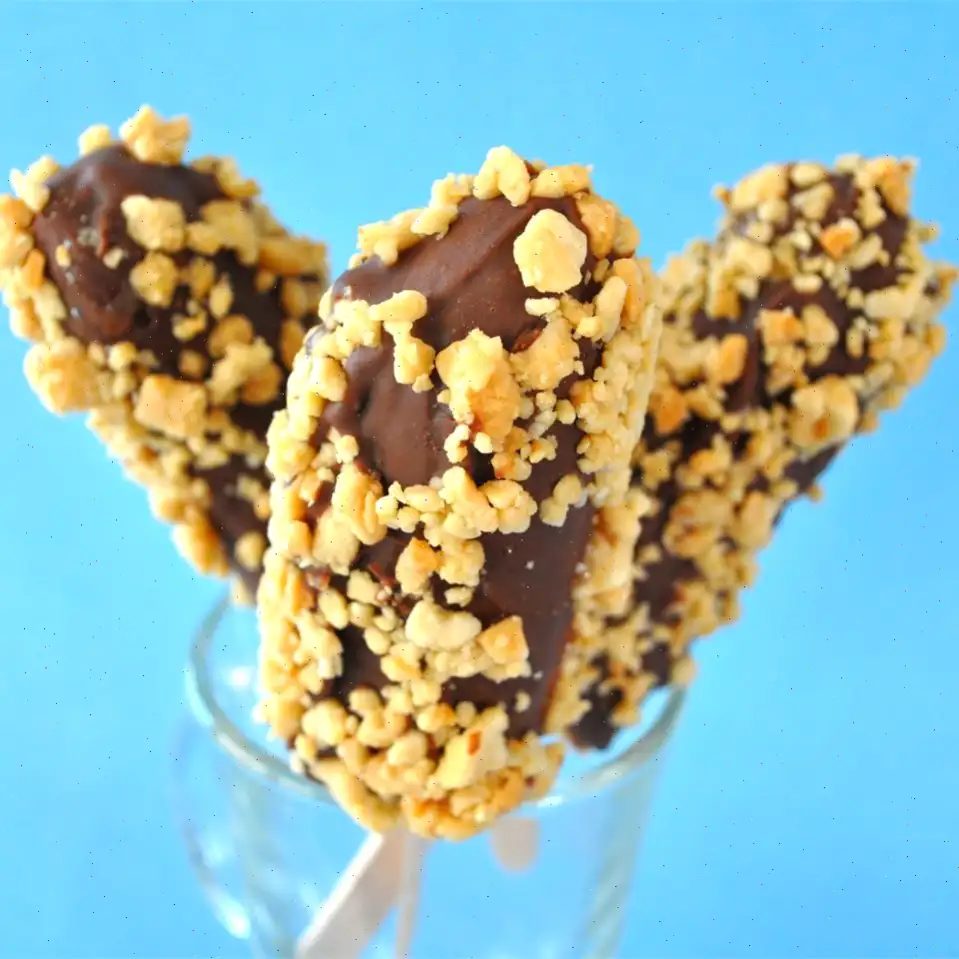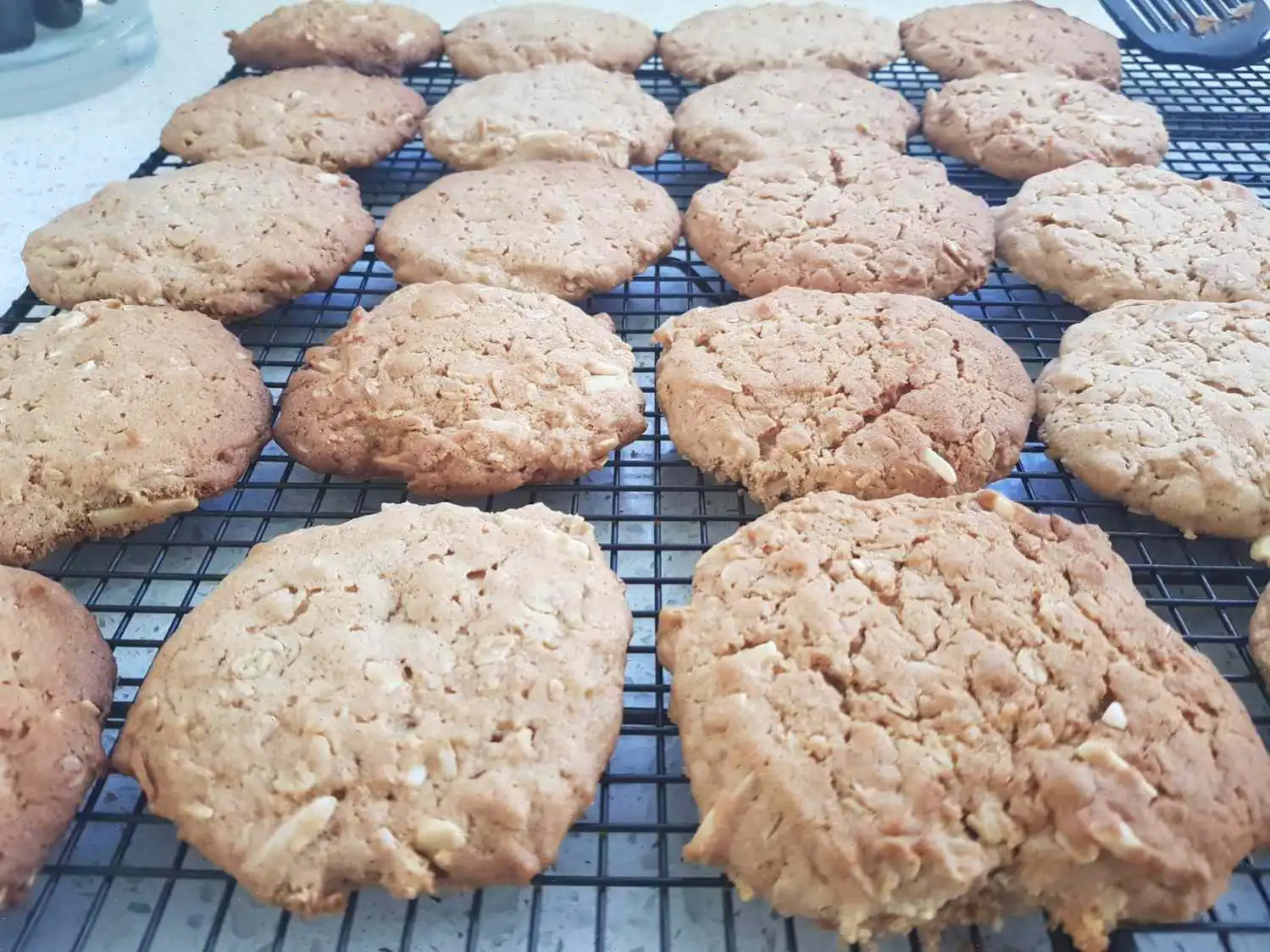
Smith Island Cake Recipe
Chocolate Layer Cake with Icing
This recipe makes 16 servings, and it's designed to yield the perfect cake with rich chocolate icing. The following ingredients and steps will guide you through the process. Enjoy every bite!
Ingredients
- Icing:
- 4 cups heavy cream
- cup light corn syrup
- 24 ounces bittersweet baking chocolate, chopped
- teaspoon kosher salt
- Cake:
- Cooking spray
- 1 cups salted butter, softened
- 2 cups white sugar
- 5 large eggs, at room temperature
- 2 teaspoons vanilla extract
- 3 cups all-purpose flour, sifted
- 1 teaspoons baking powder
- teaspoon baking soda
- teaspoon kosher salt
- 1 cups buttermilk, at room temperature
Directions
Step 1: Prepare the icing. In a medium saucepan, combine heavy cream and corn syrup over medium heat. Stir often and bring the mixture to a simmer. Once simmering, remove from heat.
Step 2: Place the chopped chocolate into a large microwave-safe bowl. Pour the hot cream mixture over the chocolate and sprinkle with kosher salt. Let the mixture sit for 2 minutes, then whisk until smooth. Allow the mixture to cool to room temperature, which should take about 1 hour.
Step 3: Once the chocolate has cooled, place the bowl in the refrigerator to chill for about 45 minutes, stirring halfway through, until the icing thickens and becomes spreadable.
Step 4: Preheat your oven to 350F (175C). Grease nine 8 -inch round disposable cake pans with cooking spray, and line the bottoms with parchment paper. Lightly spray the parchment paper with more cooking spray.
Step 5: In a stand mixer fitted with the paddle attachment, beat the softened butter on medium speed for about 1 minute until smooth and creamy. Gradually add the sugar and beat until the mixture becomes light and fluffy, about 3 minutes.
Step 6: Add the eggs one at a time, beating just until incorporated after each addition. Stir in the vanilla extract.
Step 7: In a separate bowl, whisk together the sifted flour, baking powder, baking soda, and kosher salt. Gradually add the flour mixture to the butter mixture, alternating with the buttermilk. Do this in three batches, starting and ending with the flour mixture, beating on medium speed after each addition.
Step 8: Divide the batter evenly (about 1 cup per pan) among the prepared pans. Smooth the tops with an offset spatula.
Step 9: Bake the cake layers in batches in the preheated oven for 12 to 14 minutes, or until a toothpick inserted into the center comes out clean.
Step 10: Allow the cakes to cool in the pans on a wire rack for 10 minutes. Afterward, turn the cakes out onto the wire racks and let them cool completely, about 20 minutes.
Step 11: Place one cake layer on an 8-inch round cake board. Spread about 1/3 cup of icing over the top with a small offset spatula. Add another cake layer and spread with another 1/3 cup of icing. Repeat this process with the remaining layers and icing.
Step 12: Coat the top and sides of the cake with a thin layer of icing. Place the cake in the refrigerator for 1 hour to chill. Reserve any remaining icing for the final glaze.
Step 13: After chilling, place the cake on a wire rack set over a rimmed baking sheet. Microwave the reserved icing at medium power (50%) in 30-second intervals, stirring between each, until smooth and pourable. This will take about 60 to 90 seconds.
Step 14: Slowly pour the icing over the top of the cake, starting from the center and moving outwards so it flows down the sides. Use a small offset spatula to smooth out the sides and fill any gaps.
Step 15: Chill the cake again in the refrigerator for about 1 hour until the icing is set.
Step 16: Carefully transfer the cake to a serving plate and serve at room temperature. Enjoy!
Recipe Tips
- Assemble the cake on a cake board and transfer it to a cake stand after the second chilling for easier handling.
- You can use three 8-inch round metal pans instead of disposable ones, but you will need to cool them between layers. Disposable pans make it easier to remove one batch and immediately bake the next.
- Make sure to line the pans with parchment paper. The cake layers are thin, and the parchment ensures they dont stick.
Nutrition Facts
Per Serving (1 of 16 servings):
- Calories: 845
- Total Fat: 56g (71% DV)
- Saturated Fat: 34g (170% DV)
- Cholesterol: 188mg (63% DV)
- Sodium: 396mg (17% DV)
- Total Carbohydrate: 79g (29% DV)
- Dietary Fiber: 4g (14% DV)
- Total Sugars: 47g
- Protein: 10g (20% DV)
- Calcium: 116mg (9% DV)
- Iron: 2mg (11% DV)
- Potassium: 305mg (6% DV)
Smith Island Cake is a beloved dessert that comes from the small, picturesque Smith Island, located off the coast of Maryland, USA. With its rich layers and decadent ganache frosting, this cake has become a symbol of local pride and heritage. Today, it is recognized as the official dessert of Maryland, celebrating the unique culinary traditions of the island. But what makes Smith Island Cake so special, and how does it stand out from other American cakes?
History and Origin
The origins of the Smith Island Cake date back to the 19th century, when islanders began crafting elaborate layered cakes to celebrate special occasions. The cakes popularity grew over the years, especially among the local fishing communities. Originally, it was made to be sturdy and portable, so it could withstand long boat rides to neighboring islands or the mainland. It was also a favorite during family gatherings and holidays.
In 2008, Smith Island Cake was officially designated as the state dessert of Maryland, recognizing its historical and cultural significance. The cake is typically made with layers of moist vanilla sponge cake, separated by rich, silky ganache, and topped with a smooth layer of chocolate icing. The recipe has evolved over the years, but its distinctive multi-layered structure and indulgent frosting have remained consistent.
Regional Features
Smith Island is a unique place in Maryland, known for its rustic beauty and slow-paced lifestyle. The island's maritime environment influences the flavors and ingredients used in local cuisine. The Smith Island Cake, for example, often features butter and buttermilk, staples in the island's dairy farming history. The cakes layers are generally thin, which is a traditional method of cake-making that was passed down through generations. This approach not only enhances the texture but also makes the cake light and airy, despite its richness.
Comparison to Similar Desserts
While Smith Island Cake shares similarities with other American layered cakes, it stands apart due to its many layers. Typically, a Smith Island Cake contains between 8 and 10 thin layers, unlike the more common single-layer cakes or even multi-layer cakes that dont have as many layers. Additionally, the frosting of a Smith Island Cake is often a bittersweet chocolate ganache, offering a rich contrast to the sweetness of the cake layers, unlike many other cakes that use buttercream or frosting with higher sugar content.
In contrast, cakes like the classic American layer cake or the beloved birthday cake often have thicker, denser layers, and their frosting can sometimes be overly sweet. The Smith Island Cakes balance between cake and ganache is what gives it its signature taste and texture.
Where is it Usually Served?
Traditionally, Smith Island Cake is served at family gatherings, weddings, and local festivals in the Chesapeake Bay area. Its appearance at the annual Smith Island Festival is a hallmark of the regions food culture. However, in recent years, the cake has spread beyond its local roots, and it can now be found at bakeries, restaurants, and even online, as a piece of Marylands culinary history. The cake is also a popular item to bring to gatherings, given its impressive, towering appearance and irresistible flavor.
Interesting Facts
One of the most fascinating aspects of Smith Island Cake is its intricate construction. The cake's many layers are designed to provide a visually stunning effect, with each slice revealing a delicate stack of cake and frosting. As the layers are so thin, it can take several hours to bake and assemble the cake, making it a labor of love. Some bakers even choose to color the individual layers, making for a vibrant and festive presentation.
Another interesting fact is that Smith Island Cake is often enjoyed with a cup of coffee or tea, which complements the richness of the ganache. While the cake has become a well-known dessert in Maryland, its roots are deeply embedded in the island's culture, where it is seen as a symbol of community and tradition.
Conclusion
Smith Island Cake is more than just a dessert; its a slice of history that carries the flavors and traditions of Marylands unique island culture. Whether you are enjoying it at a local festival or baking it for a family celebration, this cake offers a taste of the past, while still being a favorite for modern-day dessert lovers. With its rich layers, velvety ganache, and sweet memories of the island, its a cake worth savoring, no matter where youre from.
You can listen to this recipe in AI audio format. Simply click the play button below to listen to the content in a format that suits you best. It’s a great way to absorb information on the go!
FAQ about Smith Island Cake Recipe
Comments
Adam Rodriguez
05/01/2024 12:22:06 AM
I did it! I succeeded. The recipe turned out perfect. I followed all the instructions and prepared it the day before.


